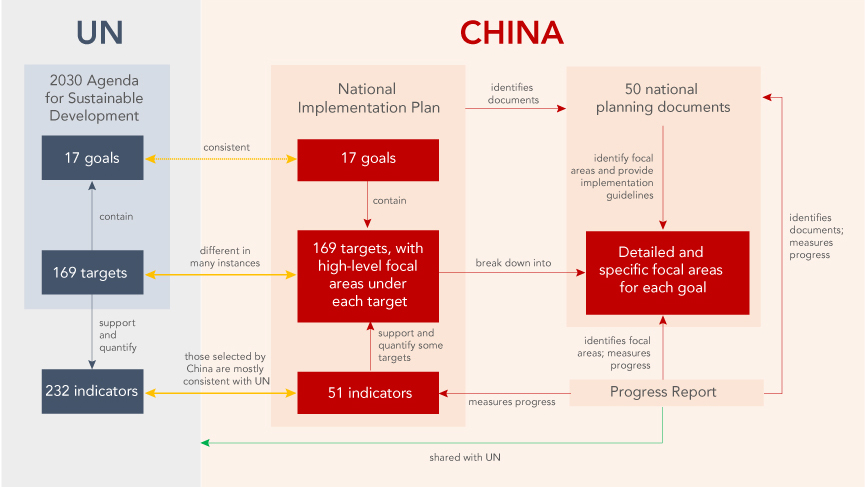Are you strategically engaging on the UN SDGs in China yet?
12 Nov. 2018 | Comments (0)
For most businesses in China, including foreign firms, directly addressing the United Nations Sustainable Development Goals (SDGs) is essentially uncharted territory. Many companies are still in the early stages of their sustainability journey in China, and existing programs often lack strategic intent or deep commitment. However, we see a tremendous opportunity for foreign firms to exploit areas of Chinese policy and SDG alignment to raise the impact and relevance of their sustainability programs in China.
What makes us say this? Simply put, China’s leadership has a vested interest in seeing the SDGs come to fruition domestically, as there is both an economic and a political need for China’s development to become more sustainable and equitable, and fast. On the one hand, China’s industrial-investment-led growth model won’t produce the type of productivity gains that are needed to avoid “middle income trap” effects. On the other hand, there is now widespread awareness and concern among the general public regarding the detrimental effects of environmental pollution on public health, as well as growing discontent regarding the obvious and significant social inequities across Chinese society. The Chinese government is acutely aware of these challenges; addressing them is seen to be critically important for maintaining economic growth, social stability, and political legitimacy. Consequently, when taking a closer look at China’s recent economic, societal, security, and geopolitical priorities, we see that they actually converge with the SDGs across many dimensions.
For example, many aspects of China’s numerous industrial development initiatives aimed at upgrading its economy also support the realization of the SDGs insofar as they aim to slim down heavy industries, modernize the agricultural sector, and shift into the high-end and clean segments of the manufacturing value chain. Important social stability and security objectives of the Party are also closely aligned with the SDGs—chief among them, alleviating rural poverty, creating a clean and safe living environment, ensuring food safety, ensuring secure food and water supplies, and improving social and financial equity.

The numerous synergies between China’s national policy priorities and the SDGs provide “leapfrog” opportunities for MNC corporate sustainability programs in China in terms of the scale, prominence, and impact levels that can be achieved and recognized, both locally and globally. Sustainability investing in China is most effective when programs leverage a company’s recognized technology assets and/or core competencies and yield demonstrable benefits in upgrading Chinese commercial ecosystems and/or delivering improved social welfare. To be effective, this requires a deep understanding of, and alignment with, government development objectives and priorities. The focal areas the government has outlined for the implementation of the SDGs in China, if used and prioritized correctly, provide an ideal framework to identify areas where sustainability, commercial, and political priorities converge to enable breakthrough impact levels.
The overall aim of China’s domestic implementation plan for the SDGs is to bundle its various legacy sustainability efforts and economic development plans and align them, as best as possible, with the 17 SDGs and their respective targets. At a practical level, however, all government objectives are not created equal in China. China heavily emphasizes certain goals or targets, while essentially downplaying others. Some goals constitute clear policy priorities that are backed up with a set of sensible projects and implementation plans while others are still largely aspirational. There are also political sensitives attached to certain goals and targets that may make China’s leadership reluctant to engage on them in a multilateral setting. Understanding how the SDGs are being “localized” and positioned domestically is necessary to ensure an effective and realistic approach to engaging on any aspect of the SDGs in China.
Members of The Conference Board can navigate our interactive online report for a more detailed analysis of China’s focus areas for the SDGs.
-
About the Author:Anke Schrader
The following is a bio of a former employee/consultant Anke Schrader leads the research of The Conference Board China Center for Economics and Business on corporate citizenship, sustainability, and h…
-
About the Author:Minji Xie
Minji Xie is a researcher at The Conference Board China Center for Economics and Business, based in Beijing. Xie has been doing research on corporate sustainability practices in Asia for over 10 years…




0 Comment Comment Policy